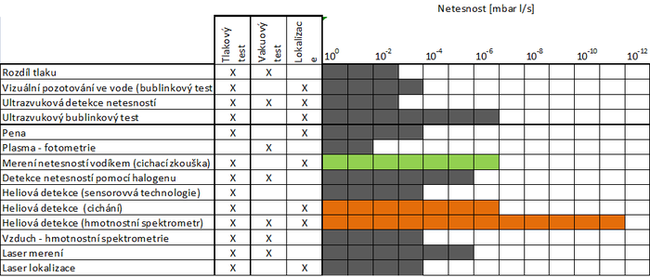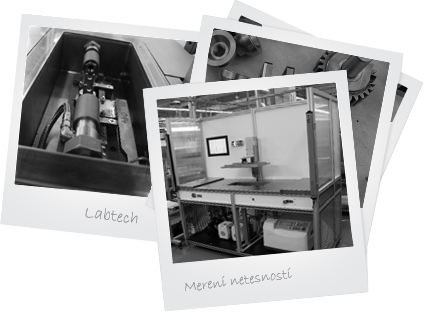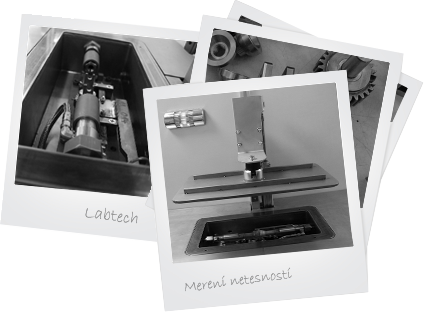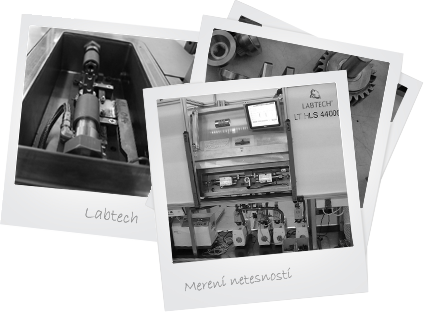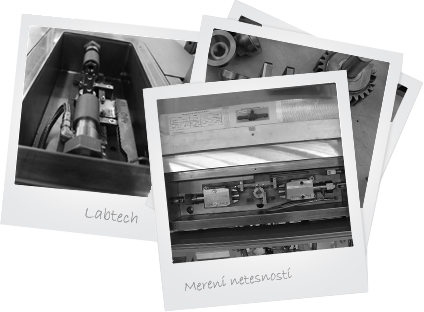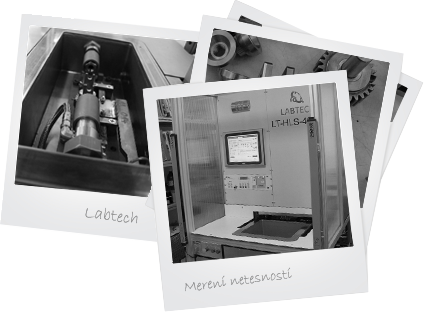Leak detection methods used in practice
Acoustic method
Acoustic leak detection uses acoustic or ultrasonic energy created by the leaking tracer gas. This method is fast and very simple; however, it has a low detection limit – suitable only for leaks up to 10
-3 mbar.l/s.
Bubble test
A test using escaping bubbles (so called bubble test) is a common method used in industry today. Its principle is simple – a tested object is pressurized and submerged in water. The leak is identified by escaping air bubbles. It is also possible to use soap solution. The solution is applied on the surface of the tested product which is then watched for air bubbles. This method is simple and inexpensive. It is only suitable for large leaks and it has its disadvantages. The tested product becomes damp and it is necessary to dry it thoroughly. This method is subjective and does not allow for quantitative leak detection. It is only suitable for 10
-4 mbar.l/s and larger leaks.
Pressure decay
Pressure decay method is often used in industry. This test method requires a compressor and a barometer; however some systems can be more sophisticated hence more expensive. Responsiveness of this method is time bound but, generally speaking, is limited by the size of the leak up to 10
-4 mbar.l/s. Changes in temperature also limit effectiveness of this method as they influence the test results significantly.
Halogen leak detection
Halogen leak detection is used for air-conditioning and cold storage technology. This technology uses infra red leak detector to detect the tracer gas – halogen. This means that the product is filled with halogen which is not practical, expensive and questionable as far as the environment is concerned..
Helium leak detection
More information why helium is used in leak detection and the principle of helium leak detector is explained in
Mass spectrometer - helium method..
Leak localization using hydrogen
Hydrogen method is one of those which use a tracer gas to find a leak. This tracer gas is then detected by semi conducting MOS-FET sensor. Hydrogen method is used for accumulative and especially sniffing tests, where it can reach the accuracy of helium detection. (see the article
Tracer gas comparison HELIUM v. HYDROGEN).
Leak detection method comparison
